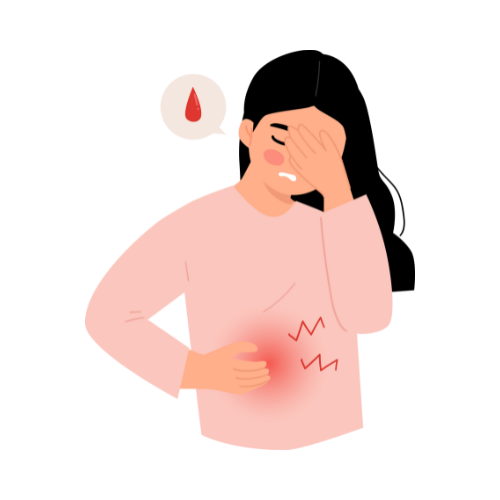🌸 PMDD: Understanding the Severe Side of Period Mood Swings
Hey there! 👋
Ever felt like your emotions take a wild ride just before your period? While many experience PMS (Premenstrual Syndrome)—those annoying cramps, mood swings, and cravings—some face a more intense condition called PMDD (Premenstrual Dysphoric Disorder). Let’s delve into what PMDD is, its impact, and how to manage it.
🧠 What Is PMDD?
PMDD is a severe form of PMS. It’s not just feeling a bit irritable or bloated; it’s experiencing intense emotional and physical symptoms that can disrupt daily life. These symptoms typically occur in the week or two before your period and ease once menstruation begins.
Common Symptoms:
Severe mood swings 😢
Depression or feelings of hopelessness 😞
Intense irritability or anger 😠
Anxiety or tension 😰
Fatigue or low energy 😴
Changes in sleep patterns 💤
Physical symptoms like bloating, breast tenderness, or joint pain 🤕
These symptoms are more intense than typical PMS and can significantly impact relationships, work, and daily activities.
📊 How Common Is PMDD?
PMDD affects about 3% to 8% of menstruating individuals. That might seem like a small percentage, but it’s millions of people worldwide dealing with these challenging symptoms every month. Unfortunately, PMDD is often underdiagnosed or misdiagnosed, leading many to suffer in silence.
🧬 What Causes PMDD?
The exact cause of PMDD isn’t fully understood, but it’s believed to be related to hormonal changes during the menstrual cycle. Some individuals may have a heightened sensitivity to these hormonal fluctuations, leading to the severe symptoms associated with PMDD.
🩺 How Is PMDD Diagnosed?
Diagnosing PMDD involves tracking symptoms over at least two menstrual cycles. Healthcare providers may ask you to keep a daily record of your mood, physical symptoms, and how these affect your daily life. This helps distinguish PMDD from other mood disorders or health conditions.
💊 Treatment Options
Managing PMDD often requires a combination of approaches:
Lifestyle Changes: Regular exercise, a balanced diet, and adequate sleep can help alleviate symptoms.
Medications: Antidepressants (SSRIs) are commonly prescribed and can be effective. Hormonal treatments, like birth control pills, may also help regulate symptoms.
Therapy: Cognitive-behavioral therapy (CBT) can provide coping strategies and emotional support.
It’s essential to consult with a healthcare provider to determine the best treatment plan for you.
🗣️ Why Talking About PMDD Matters
Awareness is the first step toward support and treatment. By understanding PMDD, we can:
Reduce stigma: Recognize that PMDD is a legitimate health condition, not just “moodiness.”
Encourage open conversations: Sharing experiences can help others feel less alone.
Promote early diagnosis and treatment: Early intervention can significantly improve quality of life.
🌟 Remember, You’re Not Alone
If you think you might be experiencing PMDD, reach out to a trusted adult, healthcare provider, or counselor. There are resources and treatments available to help you navigate this condition.
📚 Resources for Further Support
International Association for Premenstrual Disorders (IAPMD)
Mental Health America – PMS and PMDD



